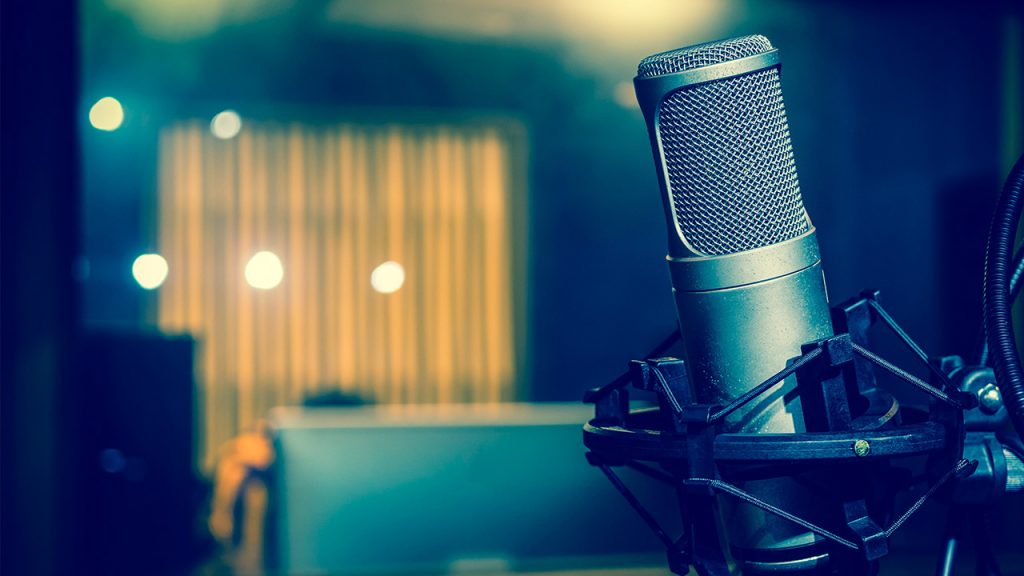8 Tips For Audio Transcription and Recording
What to consider when you want to transcribe a recording
In this article we will present all the potential benefits that professional transcription of audio or video recordings can bring, especially regarding speed, efficiency and overall quality of your workflow. First of all, let us start by defining what transcription really is. A transcription is any kind of document which contains the written form of a spoken word, usually recorded on an audio or video tape. Closed captions in movies, for example, are also a form of transcription. Transcription sometimes gives you more extra information, they can, for example, indicate sounds in the background (music) or give info on pauses.
One of the main benefits of transcriptions is that it enables you to have a clear look at what was said in the audio or video recording. You won’t have to struggle to understand someone’s strong accent, ticks or pronunciation problems. Other form of distractions and background noises are also going to be eliminated.
There are many benefits of transcriptions, but in this article, we are going to mention and describe only a few most important ones.
Better accessibility
As we already mentioned, a transcription makes an audio file more accessible. In the US around 35,000,000 people report some degree of hearing impairment, with 600,000 of them being completely deaf. If you add transcripts to your audio files, all those people will have access to your content. Non-native English speakers would also benefit from a transcription a lot, since it will make vocabulary translation easier to them.
Comprehension
Reading a document gives another perspective to the audience and facilitates comprehension of important information. Students, lawyers, doctors can all benefit from transcripts since it will make their lives easier, no matter if it comes to learning something, reviewing evidence or symptoms of a patient.
SEO boost
Google and other search engines, although they are employing really advanced search algorithms, coupled with AI and neural networks, are still not able to crawl videos or audios for keywords. This is where transcriptions play an enormously important role, since they contain those keywords for your Google ranking. We all know that high internet visibility is essential if you want to have a wide audience. So, boost your SEO with transcripts. A transcription is great to have alongside your audio or video content, because it will be loaded with important keywords, which enables potential users to find your content easier.

Audience engagement
If you offer closed caption or transcripts, your audience will feel more engaged with your content and it is more likely that they will stick with the video or audio file until completion.
Repurposing
If you transcribed your audio recording, you can easily use it for repurposing. Create new content like blog posts or social-media posts simply by recycling old high quality content. Indeed, you can simply use the transcription to create new, fun and engaging content from your old materials. The whole procedure, when you have a good transcription, boils down to copy pasting of your favorite parts and some good editing. Easy peasy! You can create various new intriguing blog post, or paste some cool best of quotes on your social media.
Okay, now that we talked a little bit about the benefits of audio transcriptions, let us give you some advice on what to keep in mind when creating an audio recording. It is important that you record a high-quality tape since this will help to get more accurate results.
- High-quality equipment for high-quality results
An external microphone is always a good idea, since built-in mics might also record the sound that the device makes. Thus, the recording would have lots of background noises.
When it comes to choosing the type of the microphone, there are also a few things to keep in mind. The most important question that should be posed is: How many speakers are going to be recorded? If the answer is one speaker, you should opt for a unidirectional microphone. If more people are going to have a conversation you are probably better off with an omnidirectional microphone which is able to make a good recording even when sounds come from all directions.

Also, if you know that you are going to change locations a lot, maybe it would be smart to buy a portable audio recorded. They are small and user-friendly and can record different things, like interviews, lectures, shows, even music and the results are quite impressive.
Also, before buying, definitely check out the reviews and find what device suits your needs best.
As in most other thing in life as well, you can say that you have to pay for quality. But, if you are recording a lot, we would truly suggest that you invest in high-quality equipment. This way, you will get more accurate audio transcriptions.
- Minimize background noises
Of course, background noises have a negative impact on your final audio recording. This is why, you should try to minimize them. Turn of devices that might interrupt or produce noise during the recording session, close the doors and windows, escort your pet to another room, maybe even write a “do not disturb” sign and put it outside the recording room. Use some sort of wind protection in the case you are recording outside.
Also, try not to breath into the microphone since this is also distracting background noise that makes the comprehension more difficult later on.
- Speak slowly with a loud and clear voice
Top-notch recording devices won’t do much, if you are not in control of you voice. You shouldn’t speak fast; your pronunciation should be clear and your voice strong. Try not to stutter. Also, avoid speaking direct to the microphone since this can lead to hissing sounds in the recording when you pronounce some consonants.
If you are not the one speaking, tell the speaker to present themselves before speaking. Also, if you are moderating a conversation try to stop interruptions or people talking over each other and encourage repetitions when something wasn’t clear the first time.
Note that occasional moments of silence arrent necessary a bed and awkward thing, so allow them to happen.
- Placement of the recording device
If more people will be speaking, make sure to put your recording device somewhere in the middle of the speakers so everyone can be equally well understood. If you notice that someone is a bit quitter and speaks with a soft voice try to place the recording device a little bit closer to that person. This will make final result better.
An external microphone should be placed a little bit above the speaker. It is also important that the mic is a not right in front of or too far away from the speaker. 6-12 inches away is ideal to avoid distortions or ambient noises.
- Audio limiter
This device or software is some sort of audio compressor. It servs to keeping the volume of an audio recording steady in order to avoid distortions or clipping. You decide the specific sound setting and everything beyond that can’t get through.
- Test
Test recordings are very useful, since you can check how the speaker sounds, especially if you are recording in a new place or use equipment you usually don’t use. The goal is to see how much you can hear and understand. Chances are that if you can’t understand what the speaker is saying the transcriptionist want be able neither. This means that you need to change something, maybe the recording device or try placing the microphone somewhere else or ask the speaker to speak more slowly and clearly.
- Quality is important
Quality of the audio recording is of key importance and never sacrifice it. Because if you do, you will have more problems down the road. For example, your transcriptions won’t be accurate.
- Transcription services
Transcribing your audio file by yourself is going to be a long and nerve wrecking piece of work. This is why we suggest you simply outsource this job and choose the right transcription service provider. First of all, you need to see if a machine transcription service is going to be enough for you or should you hire a professional human transcriber for the job. A professional human transcribe is going to deliver you more accurate results but for a higher cost and longer turnaround time. See what if important to you and decide accordingly.
Gglot is a great transcription service provider. We work fast, deliver accurate transcriptions and aren’t pricey. When it comes to the turnaround time, it of course depends on the length of the recording, but also on the mere quality of the audio, the topic of the conversation (is technical vocabulary used a lot) and the accent of the speakers. We can give you an estimate when we listen to the file. Timestamps or verbatim transcriptions are great additions that we offer as well. So simply send us your audio file and we can discuss the details.